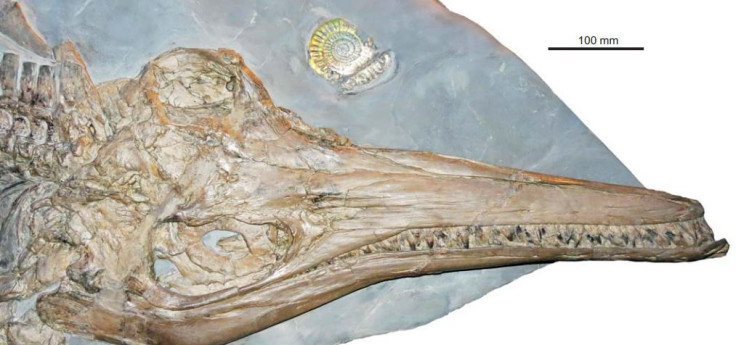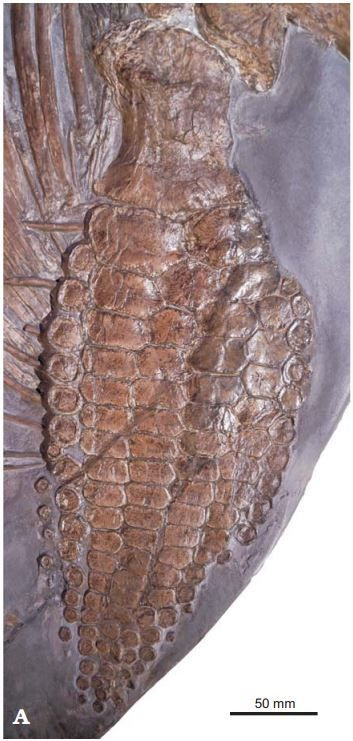Dinosaur-Era Fossil Shows Marine Reptile Was Pregnant At Death

The biggest fossil ever found of a dinosaur-era marine reptile called the Ichthyosaurus was pregnant when it died.
Researchers say they found an embryo inside the skeleton that includes pieces of vertebrae, ribs, a forefin and a shoulder blade, according to a study in the journal Acta Palaeontologica Polonica. Although pieces have been added to the fossil to reconstruct the specimen, the mother, an Ichthyosaurus somersetensis from about 200 million years ago in the early Jurassic period, was roughly 10 feet long — making her the “largest unequivocal example of the genus Ichthyosaurus.”
Ichthyosaurs were a group of large marine reptiles that evolved before dinosaurs even appeared and could be found all over the globe. They were comparable to porpoises but are distantly related to lizards and snakes of today. This group includes the genus Ichthyosaurus, to which the pregnant specimen in question belongs. The animals within this genus looked a lot like fish and were probably fast swimmers, and they had large eyes and long rows of sharp teeth.
The researchers say in addition to the size of the fossil, the embryo also makes it special because it is a rare find — scientists have only found embryos from two other genera from the early Jurassic, and this is the first Ichthyosaurus embryo that can be definitively assigned to a species.
The embryo is about 2.5 inches long.
Discovered in Somerset, England, in the 1990s, the ichthyosaur was housed at a museum in Germany.
“It amazes me that specimens such as this [the biggest] can still be ‘rediscovered’ in museum collections,” paleontologist Dean Lomax said in a statement from the University of Manchester. “You don’t necessarily have to go out in the field to make a new discovery. This specimen provides new insights into the size range of the species, but also records only the third example of an Ichthyosaurus known with an embryo. That’s special.”

The embryo was found between the adult female’s ribs and it being the only one in the fossil adds to a pattern.
According to the study, the other two embryos previously found in Ichthyosaurus fossils were also single embryos: “This may be because remains of other embryos have not been preserved or were unknowingly removed during preparation,” the authors wrote. “Alternatively, the presence of a single embryo may suggest that Ichthyosaurus carried just one embryo.”
Although it’s possible that the creatures in this genus carried only one embryo at a time, the researchers warned against drawing too strong a conclusion.
“Without more specimens, it is not possible to confirm this observation,” they wrote.

Ichthyosaurs went extinct about 90 million years ago, the University of Manchester noted. Before that time, the marine reptiles were abundant, and today the Ichthyosaurus is “one of the most common fossil reptiles in the UK, with thousands of specimens known, ranging from isolated bones to complete skeletons.”
This most recent one described could help scientists better understand how and when ichthyosaurs evolved.
© Copyright IBTimes 2024. All rights reserved.





















